COCONet Science ›
COCONet Science
COCONet Graduate Fellowships
Fellowship Awardees
2013 Regional Data Center Awardees
Science Snapshots and Highlights
The COCONet Graduate Fellowships supported students undertaking high impact research and graduate-level training in the Earth sciences in the Caribbean region where there is a significant need for more expertise and study to meet immediate concerns and provide longer-term benefits to the COCONet community. The benefits of the Fellowsship included but not limited to, educational advancement, professional workforce development, hazards mitigation, development and planning, and understanding and living with Earth processes.
For more information please contact Glen Mattioli (mattioli unavco.org), Director of Geodetic Infrastructure at UNAVCO and Principal Investigator for COCONet.
unavco.org), Director of Geodetic Infrastructure at UNAVCO and Principal Investigator for COCONet.
Email: mattioli unavco.org
unavco.org
COCONet is supported by the U.S. National Science Foundation in collaboration with many people and partnerships. Please visit coconet.unavco.org for more details.
The Continuously Operating Caribbean GPS Observational Network (COCONet) project funded by the National Science Foundation as a Collaborative Research project between UNAVCO and the University Consortium for Atmospheric Research (UCAR) highlight recipients of COCONet Graduate Fellowship awards for 2013, 2014, and 2015. Many fellowship recipients are now publishing their research, please see below for their publication references.
Graduate fellows, please share your publications with us!
-
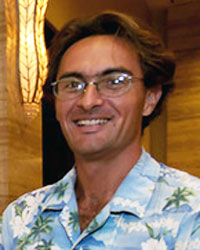
Teddy Allen (COCONet Graduate Fellowship recipient 2014)
Post-doctorate position at the International Research Institute for Climate and Society, Columbia University. Dr. Allen has a Ph.D. in meteorology from the University of Miami with research focused on understanding the origins of the bimodal rainfall signal in the Caribbean and the onset of the related mid-summer drought. He has a Bachelor’s degree in physical geography from the University of California, Santa Barbara and a Masters degree in geography from East Carolina University. He is a volunteer for the International Environmental Data Rescue Organization and has led workshops on climate data rescue and analysis in Dominica and Jamaica.
-

Esteban Josue Chaves Sibaja (COCONet Graduate Fellowship recipient 2013, 2014 and 2015)
A doctoral graduate student in seismology at the University of California, Santa Cruz. Esteban is from Costa Rica. He has a Bachelor’s degree in physics from the Universidad Nacional (UNA, Costa Rica) and has worked at the Volcanological and Seismological Observatory of Costa Rica (OVSICORI). His doctoral research is focused on understanding the seismic coupling between the Cocos and Caribbean plates in the subduction zone beneath the Nicoya and Osa Peninsulas of Costa Rica. Both regions have the potential for a very large earthquake and tsunami.
Publications:
E.J. Chaves and S.Y. Schwartz. (2016). Monitoring transient changes within overpressured regions of subduction zones using ambient seismic noise. Science Advances, 2(1). https://doi.org/10.1126/sciadv.1501289.
Open Access » -
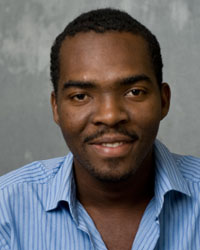
Roby Douilly (COCONet Graduate Fellowship recipient 2013, 2014 and 2015)
A doctoral graduate student in geophysics at Purdue University. Roby is from Haiti. He has a Bachelor’s degree in civil engineering from Universite d’Etat d’Haiti and a Masters degree in seismology from Purdue University. His doctoral research is focused on understanding and modeling the rupture process of the Enriquillo and Leogane fault zones in Haiti in order to estimate the distribution and strength of future ground shaking to improve risk resiliency in Haiti and other seismic zones.
Publications:
Douilly, R., Aochi, H., Calais, E., & Freed, A. M. (2015). Three-dimensional Dynamic Rupture Simulations Across Interacting Faults: The Mw7. 0, 2010, Haiti Earthquake. Journal of Geophysical Research: Solid Earth, https://doi.org/10.1002/2014JB011595.
Access Restricted »See the UNAVCO Science Snapshot on this project: Dynamic Rupture Model for the 2010 Haiti Earthquake
-
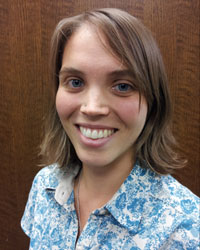
Andria Ellis (COCONet Graduate Fellowship recipient 2014 and 2015)
A doctoral graduate student in geophysics at the University of Wisconsin, Madison. She has a Bachelor’s degree in civil engineering from the University of the Pacific. Her research is focused on understanding plate deformation using GPS measurements, at the western edge of the Caribbean plate, where the Motagua-Polochic fault system, the Middle America subduction zone and other faults have caused destructive earthquakes and volcanic eruptions. She has had valuable geotechnical internships and was a teacher/mentor for a middle school geoscience experience for girls project.
Publications:
Ellis, A. P., DeMets, C., Briole, P., Molina, E., Flores, O., Rivera, J., Lasserre, C., Lyon-Caen, H., Lord, N. (2015). Geodetic slip solutions for the Mw= 7.4 Champerico (Guatemala) earthquake of 2012 November 7 and its postseismic deformation. Geophysical Journal International, 201(2), 856-868. https://doi.org/10.1093/gji/ggu484.
Access Restricted » -
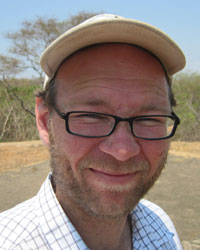
Halldor Geirsson (COCONet Graduate Fellowship recipient 2013 and 2014)
Post-doctorate position at the European Center for Geodynamics and Sesimology. Dr. Geirsson has a Ph.D. in geophysics from Pennsylvania State University. His research focused on understanding the tectonics and deformation related to the subduction of the Cocos plate beneath the Caribbean plate near El Salvador, Nicaragua and Costa Rica. His research will help to assess earthquake hazards (such as the 5 September 2012 magnitude 7.6 Nicoya earthquake) and volcanic hazards (such as the 1999 eruption of Cerro Negro in Nicaragua). Halldor is from Iceland and has a Bachelor’s degree and a Masters degree in geophysics from the University of Iceland.
Publications:
Geirsson, H., LaFemina, P., DeMets, C.,Hernandez, D. A., Mattioli, G. S., Rogers, R., Rodriguez, M., Marroquin, G., & Tenorio, V. (2015). The 2012 August 27 Mw7.3 El Salvador earthquake: expression of weak coupling on the Middle America subduction zone. Geophysical Journal International, 202(3), 1677-1689. https://doi.org/10.1093/gji/ggv244.
Article PDF »Kobayashi, D., LaFemina, P., Geirsson, H., Chichaco, E., Abrego, A. A., Mora, H., & Camacho, E. (2014). Kinematics of the western Caribbean: Collision of the Cocos Ridge and upper plate deformation. Geochemistry, Geophysics, Geosystems, 15(5), 1671-1683, https://doi.org/10.1002/2014GC005234.
Access Restricted »Weber, J. C., H. Geirsson, J. L. Latchman, K. Shaw, P. La Femina, S. Wdowinski, M. Higgins, C. Churches, and E. Norabuena (2015), Tectonic inversion in the Caribbean-South American plate boundary: GPS Geodesy, Seismology, and Tectonics of the Mw 6.7 April 22, 1997 Tobago earthquake, Tectonics, 34, https://doi.org/10.1002/2014TC003665.
Access Restricted » -

Ophelia George (COCONet Graduate Fellowship recipient 2013 and 2014)
A doctoral graduate student in geology at the University of South Florida. Ophelia is from the Commonwealth of Dominica, an island nation in the Lesser Antilles region of the Caribbean Sea. She has a Bachelor’s degree in geologic sciences from Florida International University and a Masters degree in geophysics from the University of Alaska, Fairbanks. Her doctoral research is focused on changes in plate tectonics affecting volcanism in the Lesser Antilles over the past 40 million years in order to generate a new hazards map for the island arc polygenetic volcanic system.
-

Hans Lechner (COCONet Graduate Fellowship recipient 2014 and 2015)
A doctoral graduate student in geology at Michigan Technological University. He has a Bachelor’s degree in geography from Humboldt State University and a Masters degree in geology from Michigan Technological University. His research is focused on understanding ground deformation at Pacaya Volcano, Guatemala using GPS and other tools. Hans will model the magma reservoir structure using this data to inform volcano dynamics and eruption warnings for public safety. Hans served in the Peace Corps in El Salvador and Jamaica before pursuing an advanced degree.
-

Steeve Symithe (COCONet Graduate Fellowship recipient 2013, 2014 and 2015)
A doctoral graduate student in Geophysics at Purdue University. Steeve is from Haiti. He has a Bachelor’s degree in civil engineering from Universite d’Etat d’Haiti and a Masters degree in geophysics from Purdue University. His doctoral research is focused on understanding the motion between the Caribbean, South American, and North American plates in order to build better kinematic models and improve knowledge of earthquake risks in Hispaniola (Haiti and the Dominican Republic share several dangerous faults that cross national borders) and elsewhere.
Publications:
Symithe, S., Calais, E., Chabalier, J. B., Robertson, R., & Higgins, M. (2015). Current block motions and strain accumulation on active faults in the Caribbean. Journal of Geophysical Research: Solid Earth., https://doi.org/10.1002/2014JB011779.
Access Restricted » -
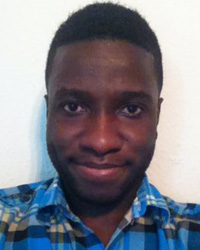
Vashan Wright (COCONet Graduate Fellowship recipient 2014 and 2015)
A doctoral graduate student in Geophysics at Southern Methodist University, Dallas. He has a Bachelor’s degree in Geology from Calvin College. In his research, Vanshan uses a combination of GPS data, seismic reflection profiles and gravity cores to understand the neotectonic and paleoseismic history of Jamaica. As a native of Jamaica, Vanshan is familiar with the environment and his work will help prepare residents for future earthquakes in Jamaica.
Publications:
Wright, V. , Hornbach, M. , Mchugh, C. and Mann, P. (2015) Factors Contributing to the 2005-Present, Rapid Rise in Lake Levels, Dominican Republic and Haiti (Hispaniola). Natural Resources, 6, 465-481. https://doi.org/10.4236/nr.2015.68045.
Article PDF »



